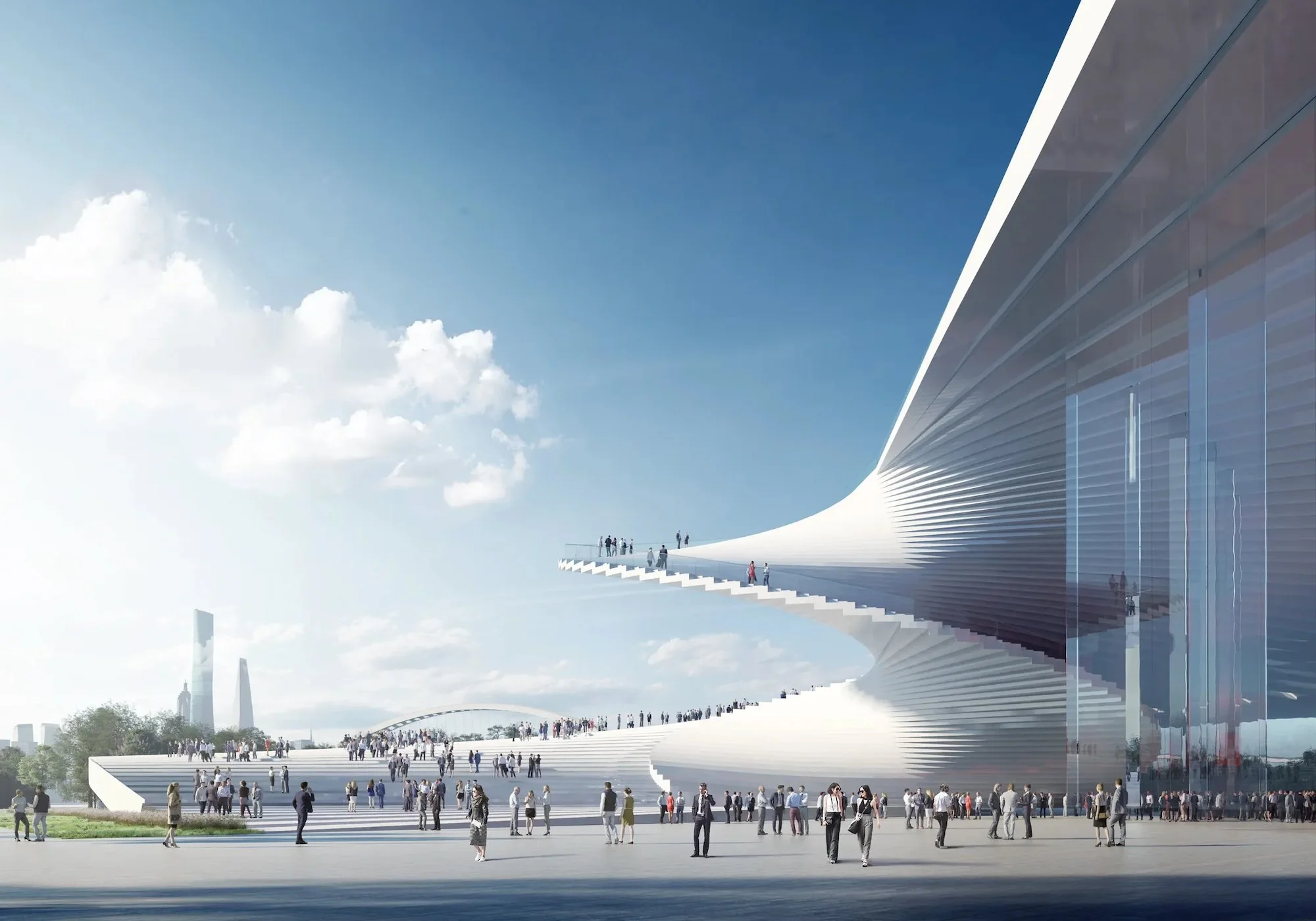Studio Ethos: How Practices Emphasize Their Core Idea
Future–Future examines the core ideas of five firms that link their body of work and communicate through intellectual discourse and on public channels.
Graduate Studies Building Oxford, Alison Brooks Architects
Alison Brooks Architects – “Generous and inclusive city-building”
For ABA, architecture is a tool to promote civicness and inclusivity in cities. This comes across by how shared spaces such as courts and parks – recurrent in their designs for education campuses, housing, and mixed-use districts – become vibrant centers for community engagement and help integrate neighborhoods with the historic urban fabric. The thinkpiece “The University as Civic Commons” by Brooks delves into how universities can serve as bridges between academic communities and the wider public, while the firm’s Home Ground exhibition showcased in Venice, Burgau, and London explores the civic role of housing by reimagining the ground-level communal spaces as thresholds between the private realm of the home and the public realm of gathering.
Taipei Performing Arts Center, OMA
OMA – “Blurring the public and private”
OMA’s portfolio rethinks programmatic agencies between public-private spaces, making civic and cultural programs the centrepiece of their multi-use buildings – as with the public loop in the Taipei Performing Arts Center that extends street life into the theatre to generate a multitude of relationships between the producers, spectators, and the public. Their 88 Seaport office and retail project in Boston slices the building volume into two to create a public domain that maintains continuity with the city’s iconic waterfront park. OMA’s diagrams, such as the one for the CMG Times Center, visually represent how public and private programs relate to one another in a building – intentionally blurring the boundaries in between.
Bosco Verticale, Stefano Boeri Architetti
Stefano Boeri Architetti – “Vertical forest”
SBA’s core idea is a more literal one, yet highly effective as the firm continues to design a series of urban towers characterized by trees and plants integrated into the building facade, after their inaugural project Bosco Verticale in Milan. The idea is being applied beyond residential projects to include the Nanjing Vertical Forest in China comprising two green towers with office, retail, museum, school, and hospitality functions. The firm’s manifesto declares SBA as “designers of the Vertical Forest”, asserting their belief that “a global movement on urban forestry” has the potential to reverse the effects of climate change. Spreading word outside of the architecture world, they were invited to speak at the European Forest Institute’s Scientific Seminar about how urban forestry can help restore degraded ecosystems and foster citizen wellbeing.
Bët-bi Museum, Mariam Issoufou Architects
Mariam Issoufou Architects – “Excavating the past to build new futures”
Mariam Issoufou first garnered attention for her Niamey 2000 housing project that takes vernacular inspiration from pre-colonial regions in Niger, stating her approach to sustainability to have a strong socio-cultural component. The firm’s philosophy of excavating the past has, since then, found itself represented in their rethinking of museums of the 21st century, such as with the ongoing Bët-bi Museum in Senegal and how it can honor the sacrality of land and become a place where objects lost to colonial loot are reinstated. Further underlining the core idea through academia is the course that Issoufou teaches at ETH Zurich that aims to “restore knowledge to places that have been historically dispossessed of their heritage, ensuring that it is accessible to all.”
Shanghai Grand Opera House, Snøhetta
Snøhetta – “Design echoing Scandinavian values”
Snøhetta’s core idea is their translation of Scandinavian values of social and ecological equity through design – an approach that benefits both the population and the planet, with a clear emphasis on improving quality of life. The Shanghai Grand Opera House, for example, has an accessible public roof for large-scale events and visitor use, and a 24-hours open plaza that engenders a sense of public ownership of the place. Extending the idea to urban landscaping, the firm’s design for Harbourside Sydney anchors the mixed-use destination with a new public plaza and community activation all along the 240 meters of water frontage. Their recent Roelevard redevelopment in Belgium has tied back the two parts of the city formerly divided by a railway station via a revitalized pedestrian tunnel, street-level retail, and a shared green roof.
These examples demonstrate how thought leadership for architects can reinforce positioning through intellectual discourse.
How Future-Future Can Help
Future–Future advises on how firms communicate their identity, position themselves to identify new project opportunities, cultivate new markets, and win new work. Our communications and PR efforts work in tandem with the firm's commercial objectives, delivered as part of an integrated service offering. We collaborate with architects to develop and articulate compelling competitive positioning that differentiates their practice and resonates with target clients and media.
Our architecture firm competitive positioning services include:
Competitive analysis and market positioning research
Core narrative and design philosophy development
Brand strategy and messaging framework
Thought leadership content strategy
Media relations and editorial placement
Speaking opportunity development and coaching
Exhibition and showcase strategy
Award submission strategy and execution
Website messaging and content optimization
Social media positioning and content
Manifesto and vision statement development
Public relations campaigns that reinforce positioning





